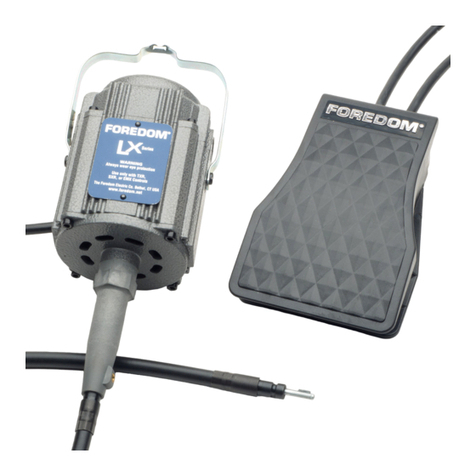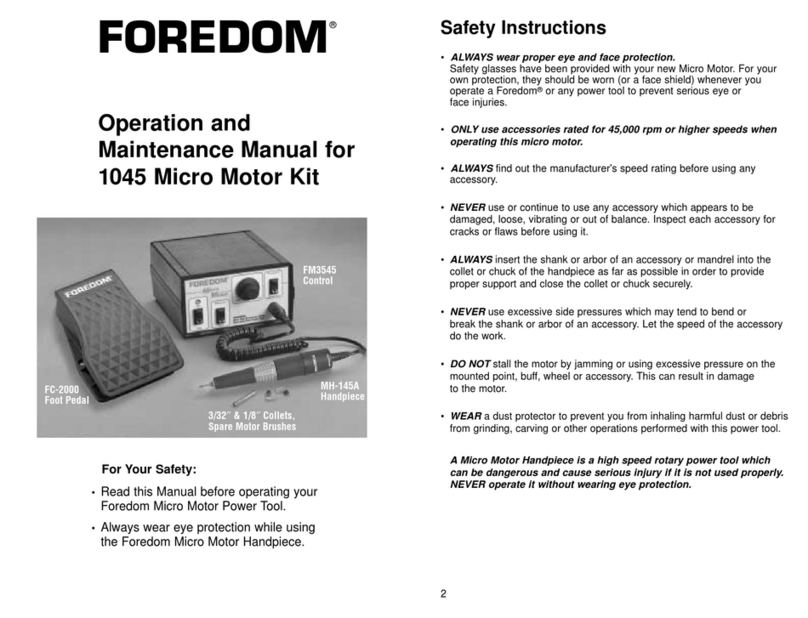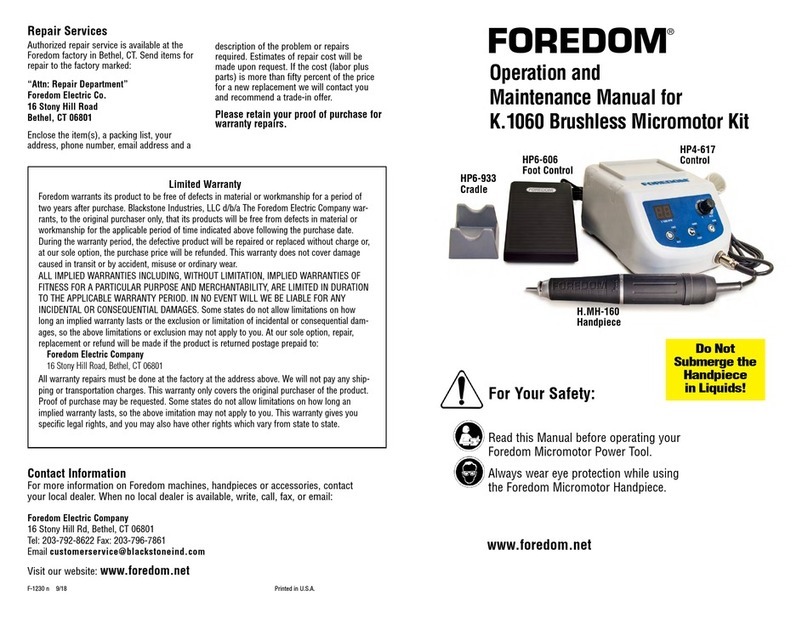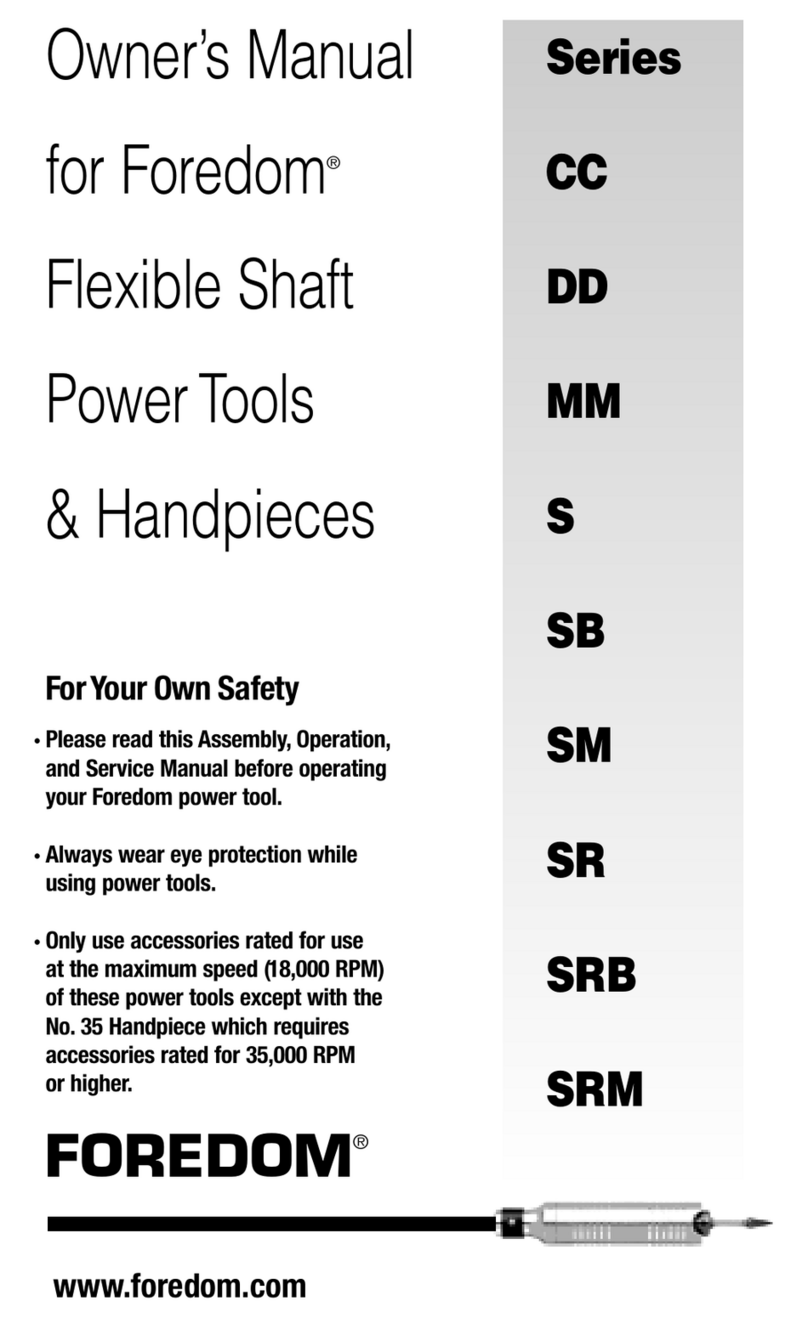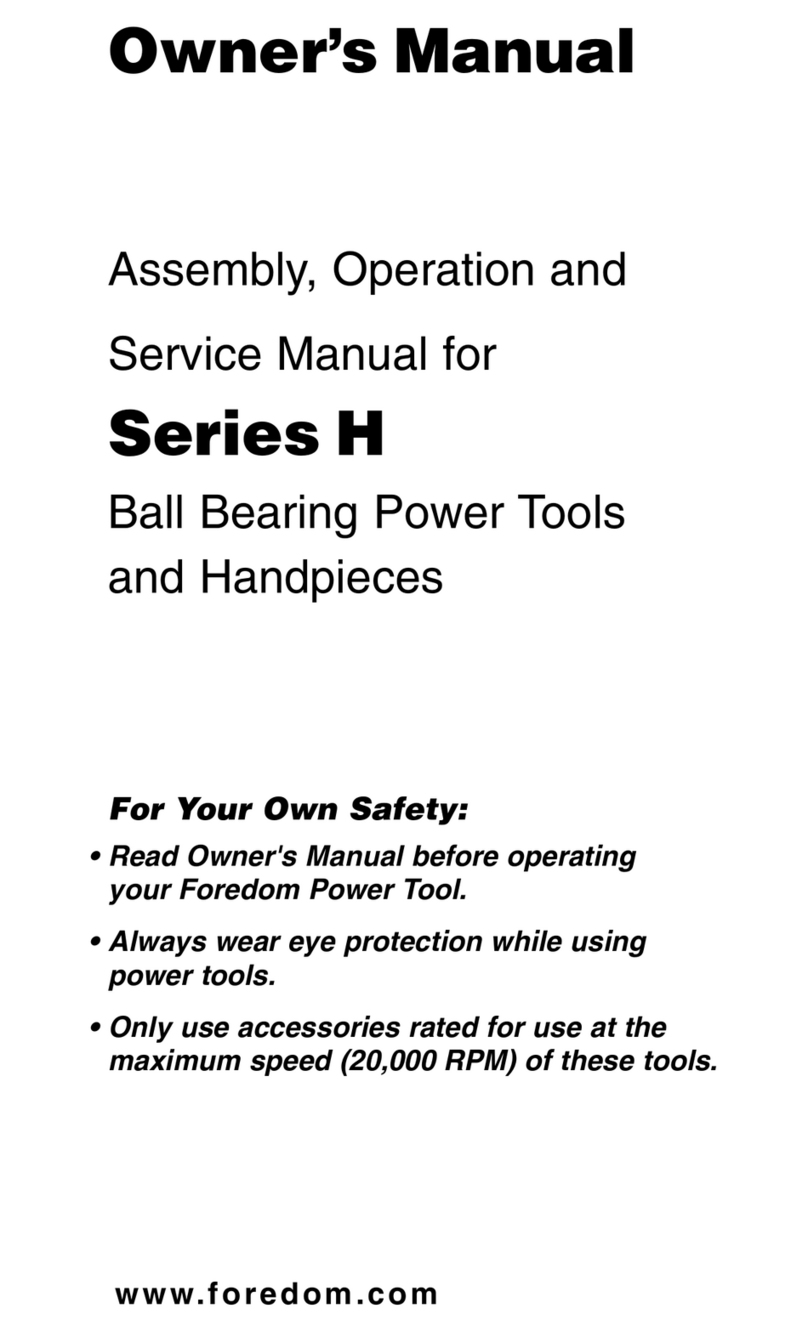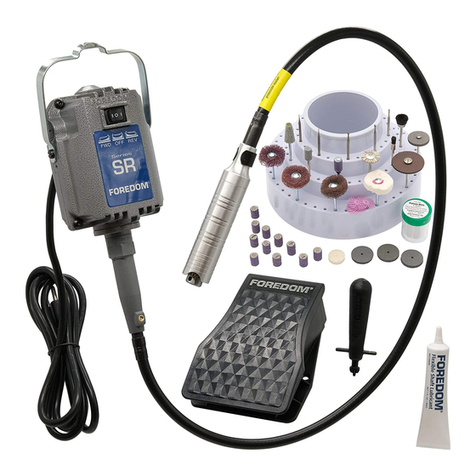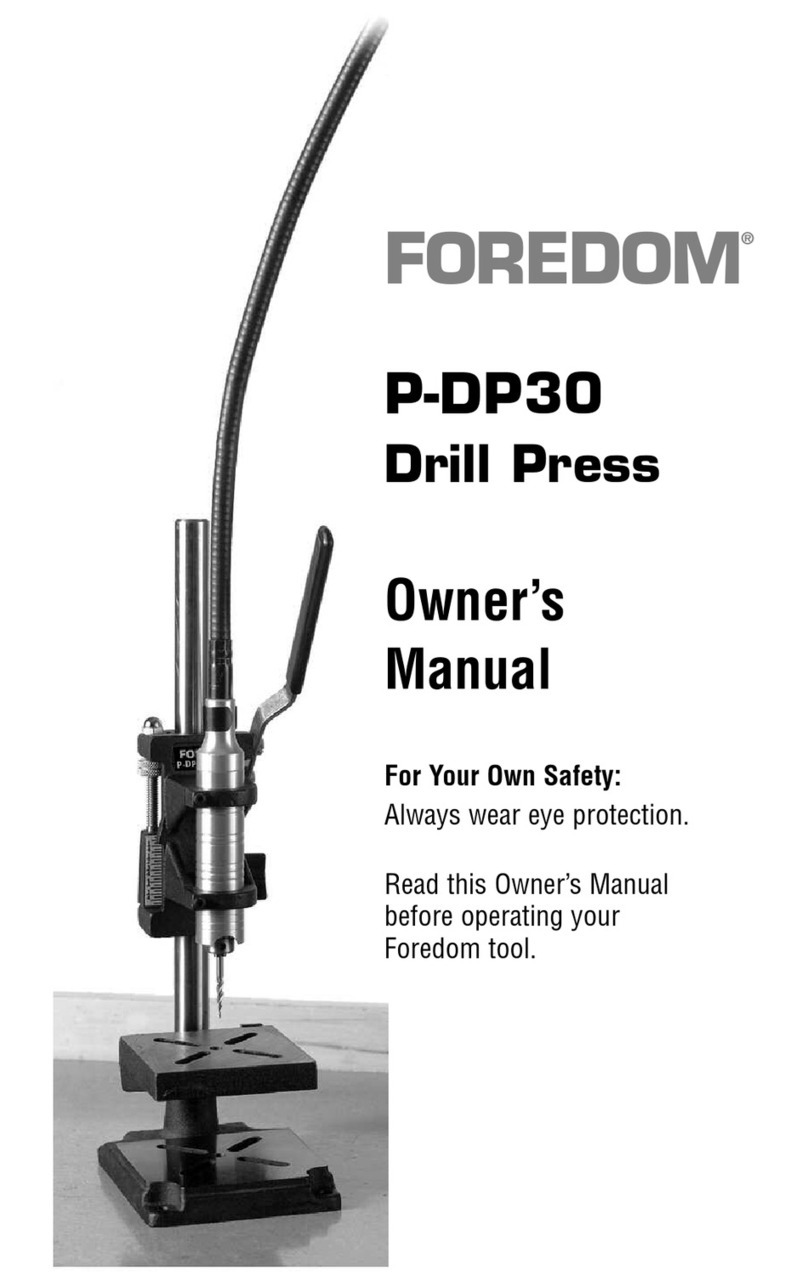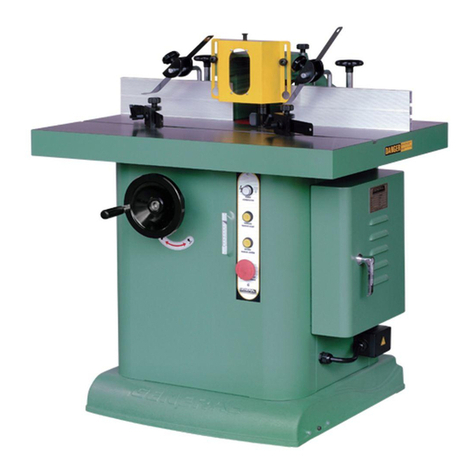25, (25H), 28 and 28SJ, 35, 35SJ, 43T, 44T,
(44HT), and 44TSJ Collet Handpieces:
To insert or change accessories, insert pin
provided into the pilot hole and through the
spindle hole (turn spindle to align holes). Loosen
chuck nut slightly with wrench provided. Insert
shank of accessory into collet. Tighten chuck nut
with wrench, keeping pin in pilot hole. Test for a
secure hold by pulling on accessory. Remove pin.
Chuck Type —30®,30SJ,
and (30H) Handpieces:
These handpieces have a
geared 3-jaw #0 chuck.
Open chuck jaws as far as necessary with key pro-
vided. Insert shank of accessory fully into the
chuck. Tighten all three jaws with chuck key until
accessory is secure and centered. If accessory
does not run true, reopen jaws, rotate accessory
and retighten. To release accessory, reopen chuck
jaws with key and pull out accessory.
Hammer Type —15, 15D, and 15SJ
Handpieces: These handpieces have a threaded
spindle. Thread anvil or stylus into threaded spindle
as far as it will go with clockwise motion. Insert pin
provided into cross hole in anvil or stylus. Tighten
and remove pin. To release accessory, insert pin
into the cross hole and unthread.
Quick Change Type —10, 10D, 18, 18D, 18SJ,
20, 20D, 20SJ, 52, 52D, and 52SJ Handpieces:
Keep an accessory in these handpieces at all
times, during both operation and storage, or
damage to the collet and handpiece may
result. These handpieces accept only 2.35mm
(3/32″)shank accessories.
10 and 10D Handpieces:
To insert bur, turn lever 180º clockwise towards the
back (shaft connection end) of handpiece. Insert or
change a 2.35mm (3/32″)shank bur and turn lever
180º forward counterclockwise. Make sure lever
is completely locked into the forward position.
Never change burs while handpiece is running.
18, 18D, and 18SJ Handpieces:
These handpieces have a
lever on the side of the
handpiece. Push the spring
loaded lever down to open
the collet and release the shank of accessory
(2.35mm or 3/32″only). Insert accessory while
holding the lever down.
Never push lever down
while handpiece or flexible shaft is rotating.
Attaching Accessories to Handpieces
Directions for attaching accessories to handpieces
vary according to the type of handpiece being
used. Locate the model number of your Foredom
handpiece from the photos at left.
Always wait for
the motor, flexible shaft and accessory to come to
acomplete stop before changing an accessory.
Handpieces listed in brackets are for use with
Series SRH models only. Attach the accessory
according to the following:
Collet Types —8, 8D, 25, (25H), 28, 28SJ, 35,
35SJ, 43T, 44T, 44TSJ, (44HT) Handpieces:
Acollet is an interchangeable slotted cylinder that
fits inside the front of a handpiece for holding the
shank of a bur or other rotary accessory. The
diameter size of the collet must match the diame-
ter of the accessory’s shank.
General Directions:Be sure to use the correct
shank size. The correct shank will fit snugly inside
the collet. Caution: Never tighten a collet unless
an accessory has been inserted. Tightening an
empty collet or inserting an accessory which is too
small or too large may damage the collet.
Changing Collets in 25, (25H), 28, 28SJ, 35,
35SJ, 43T, 44T, 44TSJ & (44HT) Handpieces:
1. Insert pin provided into the pilot hole and
through the spindle hole (turn spindle to align
holes). Apply wrench and unscrew chuck nut
by turning counterclockwise.
2. Remove chuck nut to
expose collet.
3. Pull collet out of
handpiece spindle.
4. Slip new collet in place
and screw on chuck nut.
To insert accessory: insert shank as far as
possible into the collet. Tighten chuck nut. Test for
asecure hold by pulling on accessory. Remove
wrenches. To release an accessory, follow the
same steps. Accessories can be released when
chuck nut is loosened. If accessory does not run
true, loosen chuck nut, rotate accessory,
and retighten.
8, 8D, and 8SJ Handpieces:
Tochange a collet:slide back the chuck guard
and use one wrench to hold the spindle and the
other to unscrew the chuck nut by turning
counterclockwise. Remove chuck nut to expose
collet and pull collet out of handpiece shaft. Slip
new collet in place and tighten chuck nut
with wrenches.
9
Pilot/
Spindle
Hole
